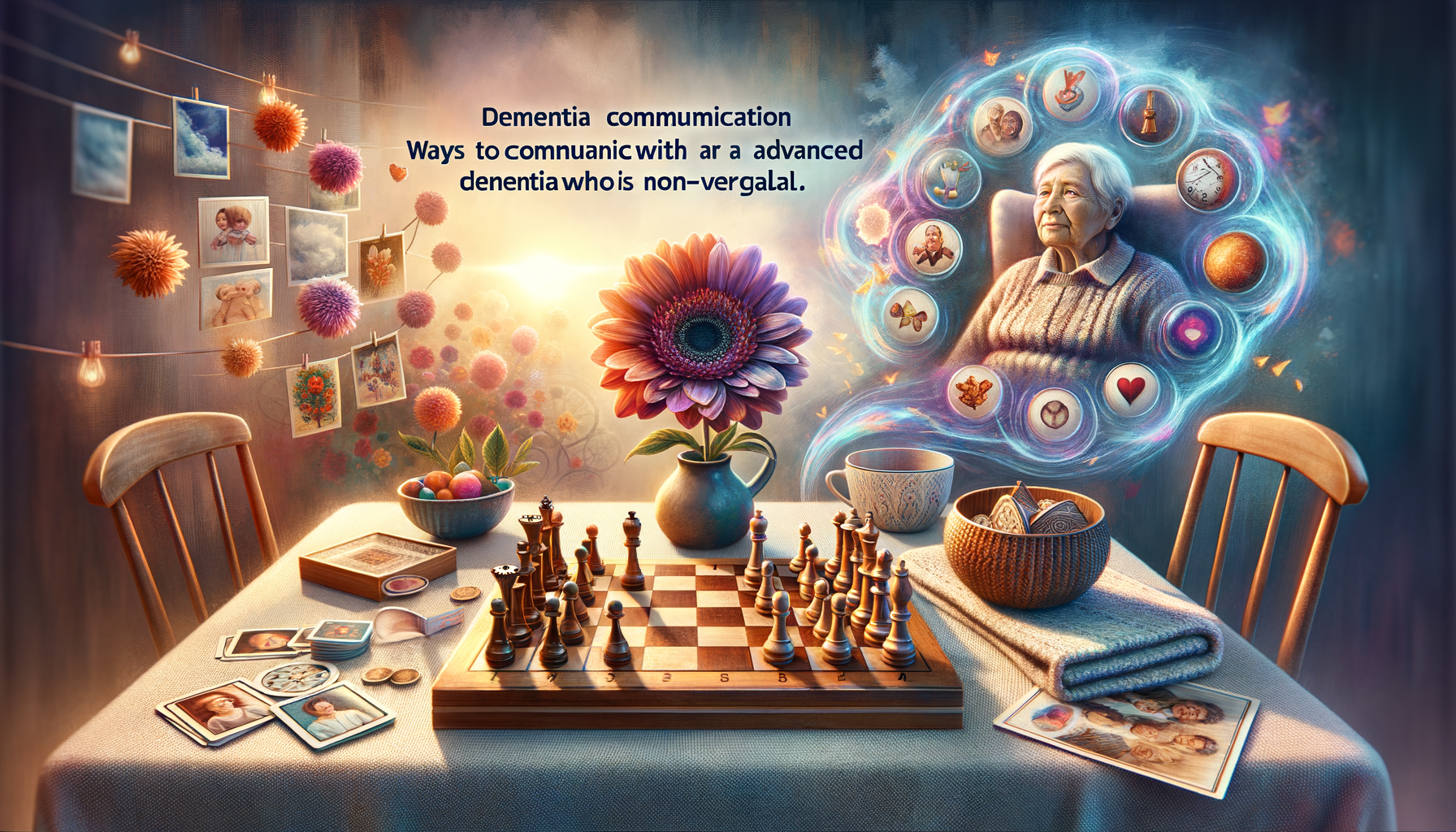Ways to Communicate with a Loved One with Advanced Dementia Who is Non-Verbal
When verbal language fades, how is connection still fostered? Understanding non-verbal cues becomes important. Exploring alternative avenues for communication can offer insights.

Introduction to Dementia Communication
Dementia is a complex condition that affects millions of people worldwide. As the disease progresses, individuals may lose their ability to communicate verbally, making it challenging for caregivers and loved ones to connect with them. However, understanding and implementing effective communication techniques can significantly enhance the quality of life for those with advanced dementia. This article explores various methods of engaging with a loved one who is non-verbal due to advanced dementia, focusing on non-verbal cues, creating supportive environments, and utilizing sensory activities.
Effective Communication Techniques with a Loved One with Advanced Dementia Who is Non-Verbal
Communicating with someone who has advanced dementia and is non-verbal requires patience, empathy, and creativity. One of the most effective communication techniques is to maintain eye contact and use gentle facial expressions to convey warmth and understanding. A soft smile or a nod can go a long way in making a connection. Additionally, using touch, such as holding hands or a gentle pat on the shoulder, can provide comfort and reassurance.
It is also essential to remain calm and speak in a soothing tone. Even if the person cannot respond verbally, they may still understand the emotions behind your words. Avoid overwhelming them with too much information at once, and give them time to process what you are saying. Repetition and consistency in your communication approach can also help establish a sense of familiarity and security.
Incorporating familiar objects, such as photographs or favorite items, into your interactions can also stimulate memories and encourage engagement. These objects can serve as conversation starters, allowing you to reminisce about shared experiences and create a sense of connection.
Using Non-Verbal Cues to Connect with a Loved One with Advanced Dementia Who is Non-Verbal
Non-verbal cues are powerful tools in bridging the communication gap with a loved one who has advanced dementia. These cues include body language, facial expressions, and gestures, which can convey emotions and intentions effectively. For example, a warm smile or a gentle touch can communicate love and support without the need for words.
Observing the individual’s non-verbal responses is equally important. Pay attention to their facial expressions, body movements, and eye contact, as these can provide valuable insights into their feelings and needs. For instance, a furrowed brow or a clenched fist may indicate discomfort or distress, while relaxed shoulders and a soft gaze may suggest contentment.
Music and art can also serve as non-verbal communication tools. Playing a favorite song or engaging in simple art activities can evoke emotions and memories, fostering a sense of connection and engagement. The rhythmic nature of music and the tactile experience of art can stimulate cognitive and emotional responses, providing a meaningful way to interact with your loved one.
Creating a Supportive Environment for a Loved One with Advanced Dementia Who is Non-Verbal
Creating a supportive environment is crucial for enhancing communication with a loved one who has advanced dementia. This involves ensuring that the physical space is comfortable, safe, and free from distractions. Soft lighting, soothing colors, and familiar scents can create a calming atmosphere that promotes relaxation and engagement.
Consistency in the environment is also essential. Keeping the layout of the room the same and maintaining a regular routine can help reduce confusion and anxiety. Familiarity with their surroundings can provide a sense of security and stability, allowing your loved one to feel more at ease.
Encouraging social interaction is another important aspect of a supportive environment. Involve family members and friends in visits and activities, as social connections can have a positive impact on emotional well-being. Encourage them to use non-verbal communication techniques and sensory activities to engage with your loved one meaningfully.
Finally, consider incorporating elements that reflect your loved one’s personality and interests into the environment. Personalizing their space with cherished items, such as photographs, artwork, or memorabilia, can evoke positive emotions and memories, fostering a deeper connection.